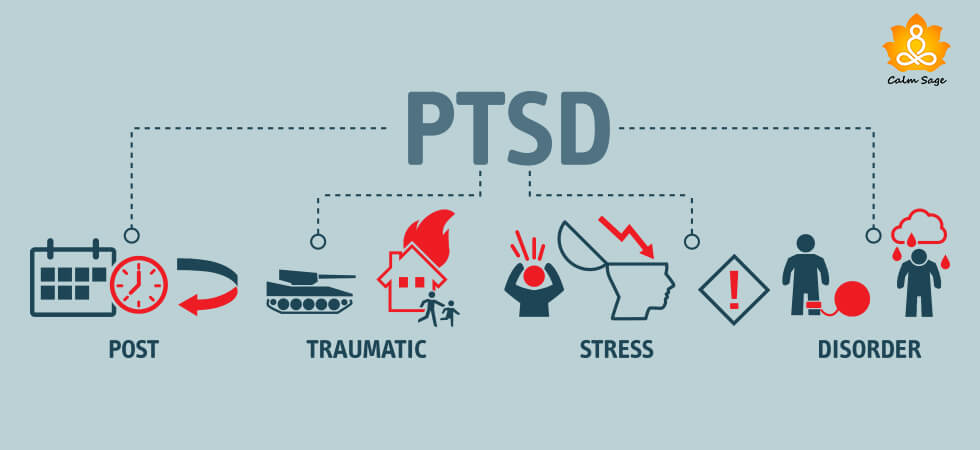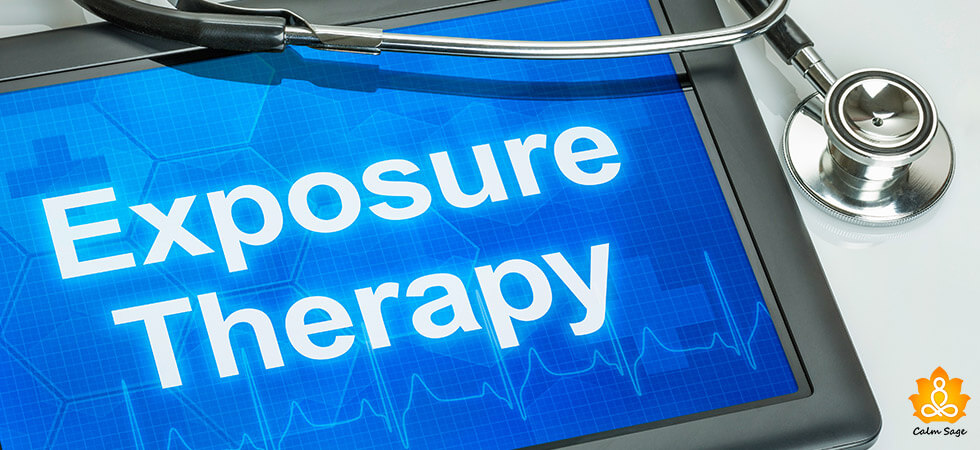What You Should Know About PTSD Triggers

Post-traumatic stress disorder (PTSD) is a type of anxiety disorder that can be characterized by the inability to recover or successfully process a traumatic event or a traumatic experience which results in intense emotional and physical reactions.
Post-traumatic stress disorder happens to those people who have either had a traumatic experience or have witnessed an extremely traumatizing event. Did you know you can develop PTSD even by listening to someone else’s traumatic experience?
It usually happens to nurses, health care professionals, police, people at the fire department, etc. This type of PTSD is called vicarious post-traumatic stress disorder.
PTSD is most common in police and military professionals because they work in a very volatile environment exposing them to a lot of intense situations. Other than these there are several people who unfortunately experience abuse (mental, physical, sexual, emotional) or experience a traumatic accident/incident or any experience that is traumatic and make you develop PTSD.
Do you know what’s more important than understanding PTSD Symptoms? It’s understanding that PTSD triggers because they are the ones that add fuel to the fire!
Why Are PTSD Triggers So Important?
Now, people who experience post-traumatic stress disorder are not always in stress or do not always experience all the symptoms of PTSD. The symptoms surface mostly in the presence of PTSD triggers. Your PTSD triggers depend on the type of traumatic experience you’ve had.
To manage post-traumatic stress disorder one needs to identify and understand PTSD triggers like PTSD triggers of abuse, PTSD triggers in a relationship, complex PTSD triggers, etc. PTSD triggers are those things that remind you of your traumatic experience. It can be anything from a date or time or sound, etc.
Here are a few examples of random PTSD Triggers;
- Sound: perhaps of crackers that mimic a gunshot (or an actual gunshot), train, a certain animal’s roar, whistle, etc.
- Day & Date: the anniversary of your traumatic experience, or a day with similar weather, etc.
- Scenario: a crowded place or being on an airplane, bus, train, etc.
So today, we are going to understand all PTSD triggers in detail so that we can all easily tackle the intense symptoms of PTSD.
Let’s Get Started…
Before we jump on to the triggers, you need to also know about the symptoms of PTSD. I say so because the symptoms of PTSD and triggers of PTSD are somehow connected. So, let’s quickly look at all the symptoms of PTSD;
What Are The 17 Symptoms Of PTSD
Different people have different traumatic experiences and so are their symptoms. Different people experience different symptoms and different triggers. Women can experience different symptoms when compared to men, the nature of trauma can produce different symptoms, etc.
Anyway, let’s look at all the symptoms of PTSD;
1. Nightmares: after experiencing a traumatic event, most people get nightmares about going through it again. Which makes them feel scared and increases their stress and also disturbs sleep.
2. Intrusive thoughts: your mind always pops up some or other unwanted & negative thoughts about your traumatic experience.
3. Avoidance: you tend to avoid anything that reminds you of that traumatic event or experience.
4. Preoccupied with negative thoughts about self: you feel like you’re not good enough, you project the guilt and shame inwards and make yourself even more uncomfortable. You let your negative thoughts take over you.
5. Memory issues: people with PTSD often struggle with memory issues, it happens because of a defense mechanism that erases memory in order to protect themselves.
6. Social isolation: this is one of the most prominent symptoms of PTSD. People who develop PTSD are often seen to curl up in a cocoon. They socially distance themselves from the rest of the world.
7. Anger issues: now after being through a traumatic experience your brain goes into hyper arousal mode. This makes you irritated to angry even on tiny things. It feels like you’re always in a fit of rage.
8. Hypervigilance: you’re always alert, you don’t want to put your guard down because you’re scared that you’ll be attacked again.
9. Lack of interest: you lose interest in almost all the things that you once enjoyed. You’re just busy in your own thoughts and nothing excites you anymore.
10. Concentration issues: you can’t seem to put your head into something. This happens because your mind always goes back to your traumatic memories.
11. Sleep-related issues: did you know most people with PTSD are also diagnosed with insomnia? Sleep-related issues most happen because of nightmares or intrusive thoughts about the traumatic past.
12. Flashback: this is also one of the most common symptoms of PTSD. People often experience vivid flashbacks, especially in the presence of their PTSD triggers.
13. Escapism: people with PTSD are always in an escape mode whenever they feel vulnerable. This usually happens when they are with people, places, or objects that are associated with their trauma.
14. Self-blame: people who develop PTSD usually indulge in self-blame. In fact, they believe that everything that has happened to them is all because of them.
15. Find it difficult to be positive: they just develop this inability to feel positive or engage in positive thoughts.
16. Generate over-the-top response: people with PTSD are often seen giving and exaggerating the over-the-top responses to anything close to a PTSD trigger. The startle is always way too much.
17. Engage in risky behavior: in order to subside the intense symptoms of PTSD, some people take refuge in risky behaviors, they engage in behaviors like substance abuse, risky sexual behavior, etc.
The above-mentioned symptoms are almost all the symptoms of PTSD that one can experience. It’s not necessary for you to experience all of them but you definitely can experience a couple of symptoms from the list.
Let’s move on to triggers now.
What Are The Different Types of PTSD Triggers?
Like I said earlier, PTSD triggers can be between different people depending upon what kind of traumatic experience you’ve had. PTSD triggers in relationships are different from PTSD triggers of abuse.
Let’s explore all the different types of PTSD triggers so it’s easier for you to understand each one of them separately. This will help you identify your PTSD triggers and easily link them to your PTSD symptoms in accordance with your traumatic experience.
Here’s a list of all the types of PTSD triggers that are responsible for your aggravated PTSD symptoms;
1. People: yes, people can be PTSD triggers. Your PTSD symptoms can be triggered if you happen to meet someone who is closely related to or associated with your trauma. This is mostly a PTSD trigger for an abusive relationship.
2. Thoughts/Emotions: your thoughts about your traumatic experience can also act as PTSD triggers. Any thought or emotion that reminds you of how you felt that day or what happened that day can trigger your symptoms.
3. Things/Objects: any object or thing that acts as a reminder of your traumatic past can trigger your symptoms. It can be anything from a knife to a statue, any object that was there at the time of your traumatic event can be a PTSD trigger.
4. Smell: smell is again something that can trigger your PTSD symptoms. For example, if you smell the same perfume that your abuser wore on someone else can trigger your PTSD.
5. Place: if you go back to the place where the traumatic event took place can trigger your PTSD symptoms. For example, visiting that city, house, room, road, etc.
6. Media: watching something on T.V. or on your phone which is similar to what happened to you can also act as a PTSD trigger.
7. Feelings: when you are experiencing a traumatic event there are a few prominent feelings that you remember. Now, when you experience similar feelings again even in the absence of anything traumatic can trigger your PTSD symptoms.
8. Sound: just like you can remember feeling differently, you can also remember the different sounds. Now, when you listen to similar sounds long after the traumatic event has passed can act as a trigger.
9. Situations: anything situation that mimics your traumatic situation can trigger your PTSD symptoms. For example being trapped in a tiny, dark room or being in a place after experiencing a plane crash, etc.
10. Anniversaries: this is a very common PTSD trigger. Most people are triggered on the anniversary of their traumatic event.
These are almost all the ways your PTSD symptoms can be triggered. Some PTSD triggers are very personal because of the uniqueness of their traumatic event. For example, a red scarf (this trigger is very specific in terms of the object as well as its color)
How To Deal With PTSD Triggers?
Now, once you have been diagnosed with PTSD you should follow all the instructions given by your therapist. Take all your medicines and regularly take therapy. Once that is done, triggers might still trouble you so you need to learn how to cope with PTSD triggers.
Here are a few things you can do;
- Learn some relaxation techniques, they will help you reduce the panic and stress you feel in the presence of a PTSD trigger.
- Whenever you feel vulnerable try to shift your focus to something nice or positive. Perhaps focus on what’s soothing so that you can calm yourself down.
- Distract yourself from the trigger. If being on a plane is a trigger you can distract yourself by watching a movie or talking to your partner. You can also try distraction strategies like backward counting or reading all the ingredients on a bottle of your sunscreen, etc.
- Don’t sit idle. Start moving, go for a watch, or just put on some music and do your favorite dance step. Just don’t simply sit there and dwell in your own thoughts.
- Do some grounding exercises. Shift your focus away from your PTSD trigger.
Other strategies to Cope with PTSD Triggers
1. Mindfulness:
Mindfulness practices can really help you relax your nerves and help you be in the present moment. With PTSD your past haunts and pulls you towards those traumatic memories from the past, therefore, mindfulness practices will help you learn to live in the present moment.
2. Deep Breathing:
although it sounds like a very simple technique, trust me it can make huge changes in your mental state. Deep breathing, when done right, can instantly relax your mind and body, bringing you back to a calm state of mind.
3. Journaling or expressive writing:
when you pen your thoughts and feelings down, it acts as a subtle way to release troubling thoughts. In fact, writing them down helps us understand what is exactly bothering us so that we can find appropriate solutions.
4. Strong support system:
having someone by your side to help you in difficult situations where your PTSD trigger is present can really help you adapt in a calmer manner. They give you encouragement and strength to deal with all the traumatic memories.
5. Self-care:
we often forget to give ourselves the much-needed care our mind and body deserve. With PTSD we live in a constant state of stress which can lead to extreme exhaustion. To beat that you must engage in regular self-care activities to keep your body relaxed.
Therapeutic interventions that can help With PTSD triggers;
1. Cognitive behavioral therapy:
CBT is a psychotherapy that helps in identifying negative, intrusive thoughts and replacing them with positive, productive thoughts.
2. Eye movement desensitization and reprocessing (EMDR):
in this therapeutic technique your bilateral eye movements are used to help you cope with troubling thoughts and emotions.
3. Exposure therapy:
this is a very common technique used in cases of trauma and phobia where you are slowly exposed to the trigger time and again until you stop generating a panic response and learn to live in its presence.
4. Cognitive processing therapy:
this is a byproduct of cognitive behavioral therapy where the main focus is on your trauma response. It helps in identifying new strategies to cope with your traumatic memories.
That’s All Folks!
I hope you found this blog about PTSD triggers helpful and informative. Do share this blog with your friends and family so that we all know about various PTSD Triggers in a relationship, PTSD triggers of abuse, etc.
Thanks for reading.
Take care and stay safe.




















